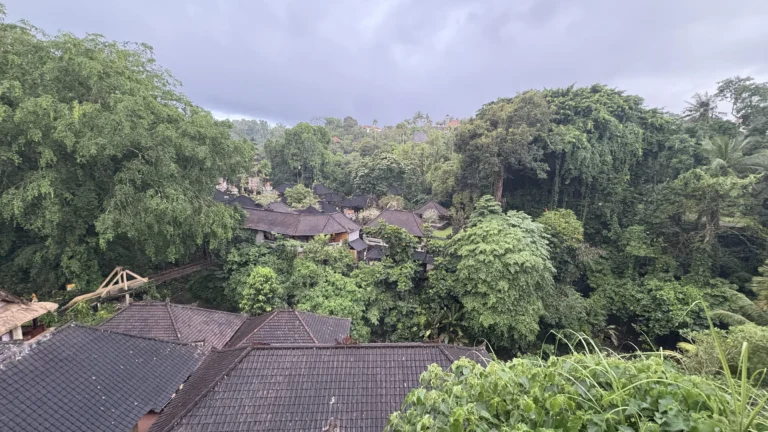On This Page
Planning an Asia travel itinerary can be overwhelming. What’s even more frustrating is arriving at a hyped destination only to find it’s a tourist trap, wasting your precious time. I learned this the hard way on my own multi-week journey across Southeast Asia—but my trip also had incredible moments of luxury that barely dented my budget.
With this honest review, you can avoid my mistakes. I’m not just sharing my exact route through Indonesia, Singapore, and Thailand. I’m revealing how I strategically used points and miles to book business class flights and stays in exclusive hotels, like the Conrad Bali and a luxury property in Bangkok, for a fraction of the cash price. This guide is more than just a travelogue—it’s a blueprint for crafting an Asia travel itinerary that helps you sidestep the pitfalls and maximize every moment.
The Route
Every great trip starts with a plan, and here at Pointalize, that plan always begins with points. This entire Asia travel itinerary was built on a foundation of strategic award bookings. By leveraging miles from programs like Miles & More and KrisFlyer, I was able to secure business class flights for the long-haul journeys and premium hotels at key stops, transforming a standard backpacking route into a luxury-hybrid adventure.
With the flights and key hotels locked in, the physical journey began in Indonesia’s surfing and party hotspot Canggu, continued through Ubud’s rice terraces, ventured to the dramatic cliffs of Nusa Penida, relaxed on the car‑free Gili Islands, and explored the quieter beaches of Lombok. From there, a strategic flight booking allowed for a day in Singapore before ending the trip in the bustling streets of Bangkok. The route was designed to balance nightlife, nature, and culture, all made possible by smart redemptions.
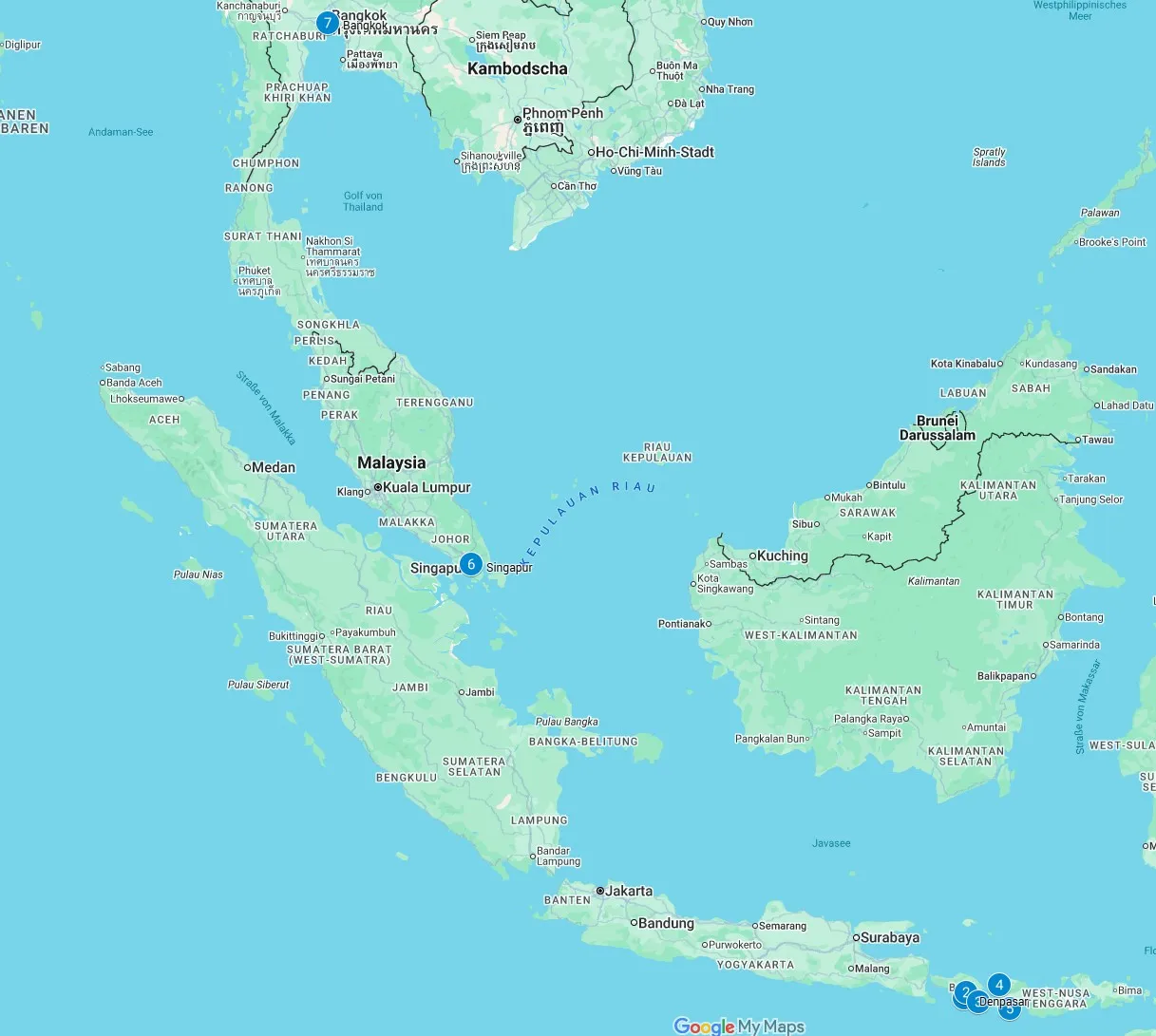
Canggu – Surf Vibes and Traffic Nightmares
Canggu is often portrayed as Bali’s hippest enclave, and while the surf culture is alive and well, my experience was mixed. I spent an evening watching the sunset from Finns Beach Club, which was a definite highlight, and tried several excellent smoothie bowls at cafes like Crate Cafe. However, the constant roar of motorbikes and standstill traffic made simple trips a stressful ordeal.
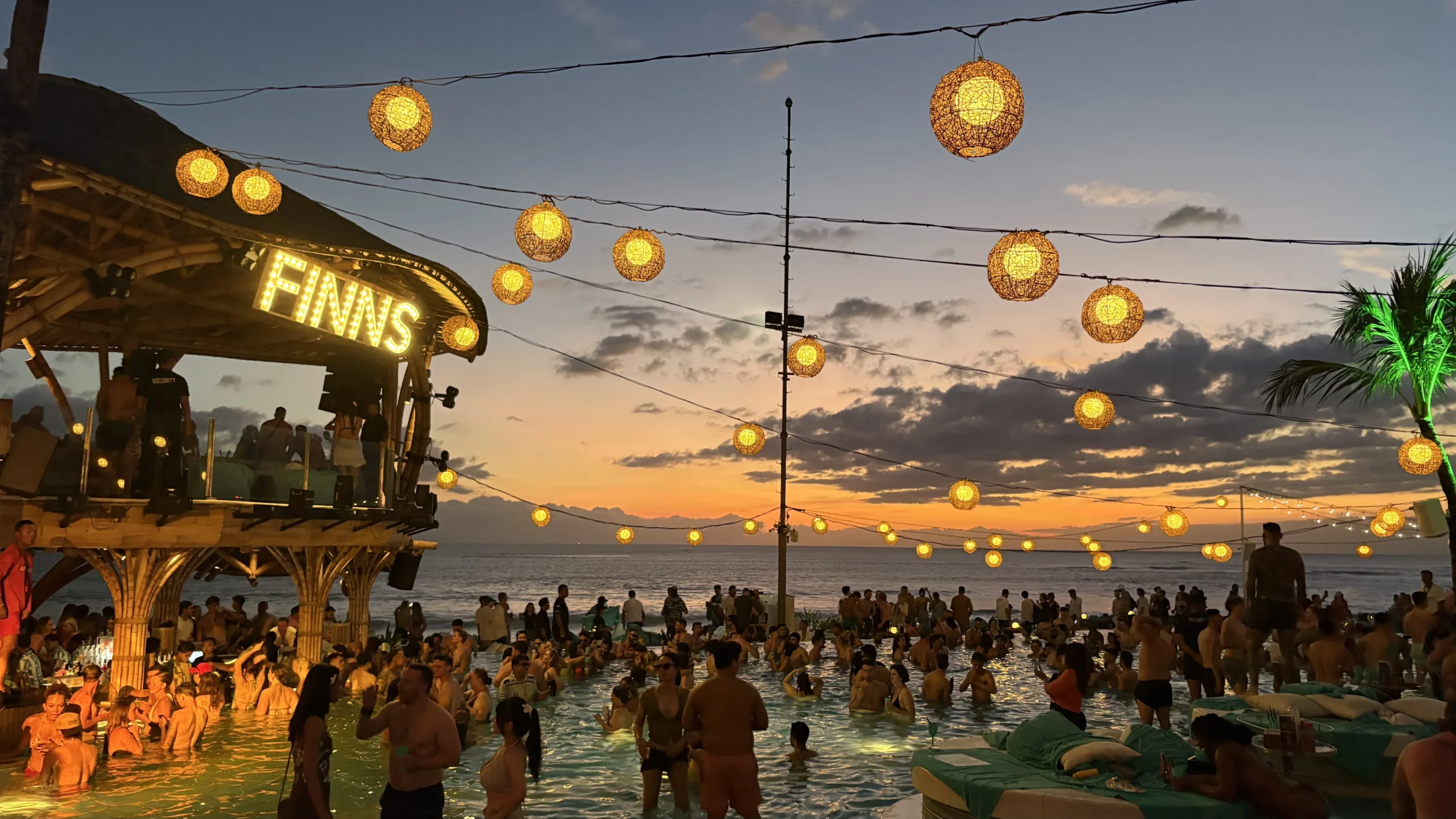
The town itself felt polluted and chaotic. For others, I’d suggest trying a surf lesson at Batu Bolong beach or finding a yoga shala for a moment of peace. The nearby Tanah Lot temple is also worth a visit at sunset. Still, for me, the negatives outweighed the positives. Scoring only two out of five, Canggu ranks lowest in this Asia travel itinerary.
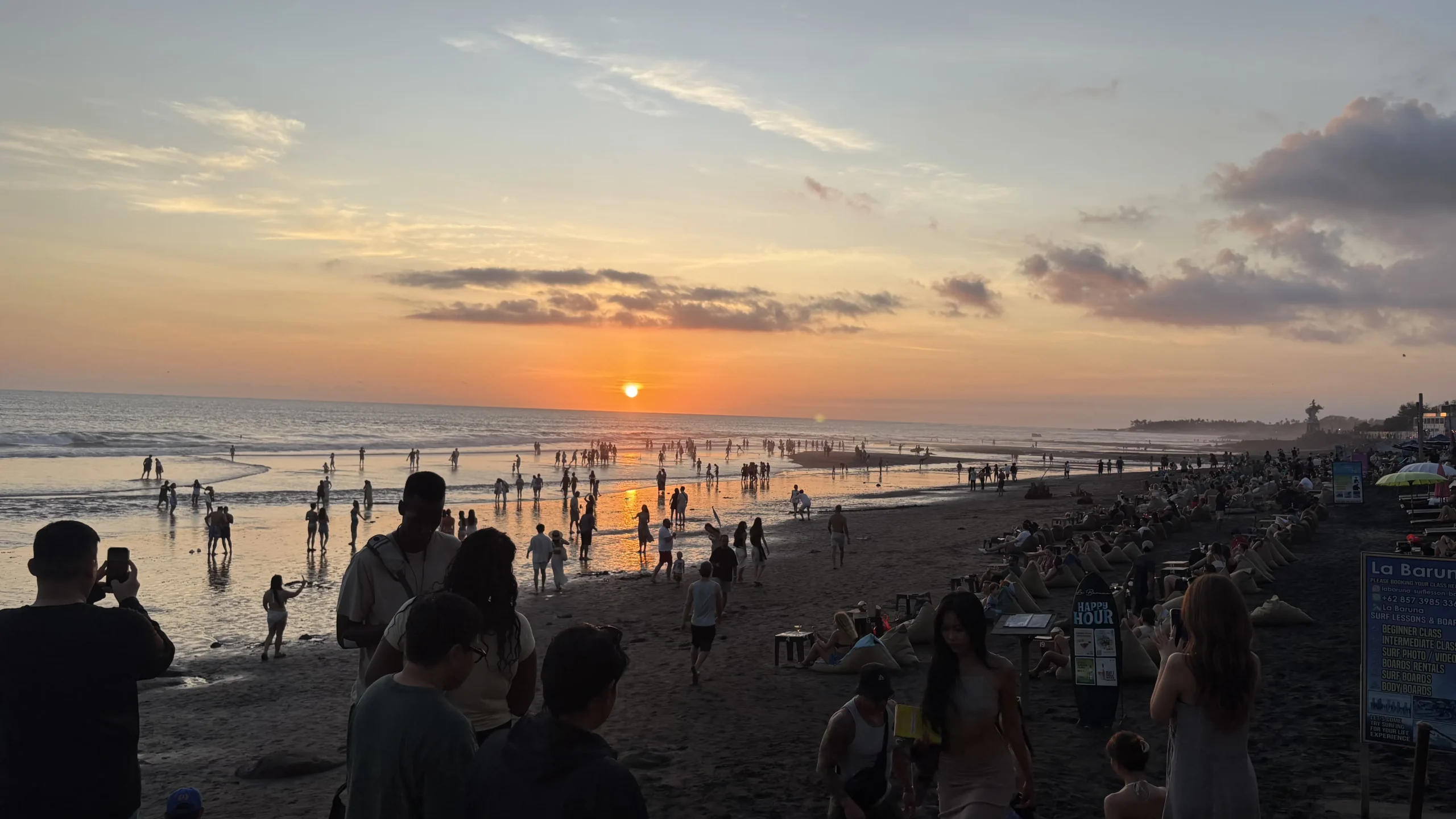
Ubud – Tranquil Rice Fields and Tourist Overload
Ubud is Bali’s cultural heart, but that heart is now struggling with congestion. I found refuge in a quiet place called “Egde of Ubud” nestled among rice paddies just outside the main town, where the mornings were serene. Unfortunately, a bout of “Bali Belly” kept me from my planned sunrise hike up Mount Batur. A trip to the Tegallalang Rice Terrace felt less like a natural escape and more like a photo queue. While I skipped it, other travelers might enjoy the Sacred Monkey Forest Sanctuary or a traditional Balinese cooking class. For reliable health information before you go, it’s always wise to check the CDC’s travel advisory for Indonesia. My advice: stay on the outskirts to find tranquility. Due to the intense crowds in the center, Ubud also receives a two-star rating.
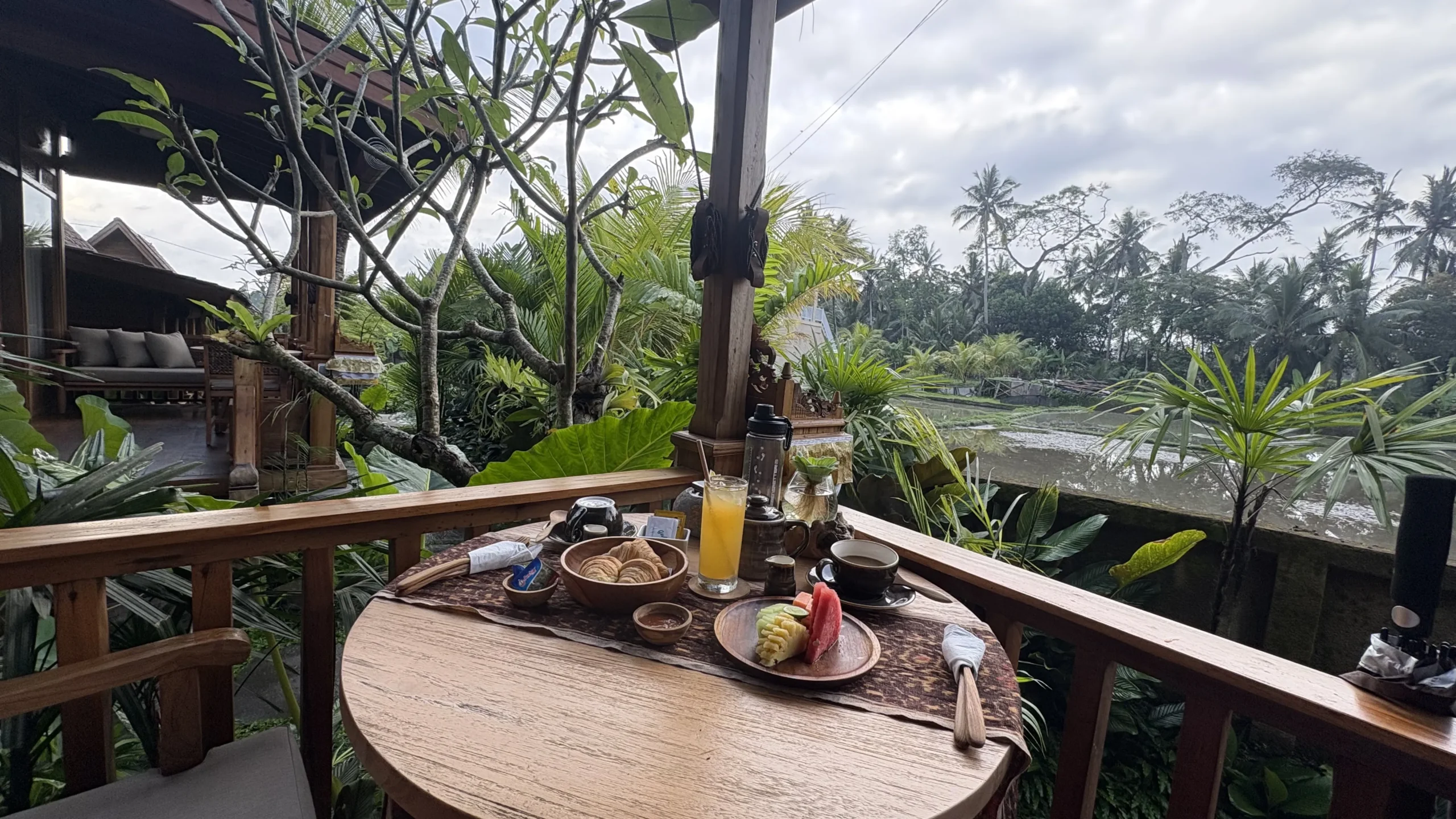
Nusa Penida – Wild Cliffs and Rising Crowds
A short, bumpy ferry ride brought me to Nusa Penida, an island of raw, untamed beauty. I rented a scooter to navigate the rough roads to Kelingking Beach. The view from the top is as breathtaking as the photos suggest, and the treacherous hike down to the pristine beach was a rewarding challenge. I also visited Broken Beach and Angel’s Billabong, two other stunning geological formations. For those with more time, snorkeling or diving with the majestic manta rays at Manta Point is a must-do activity. The island’s popularity is growing, so expect crowds at the main spots. For its sheer natural drama, Nusa Penida gets three out of five stars.
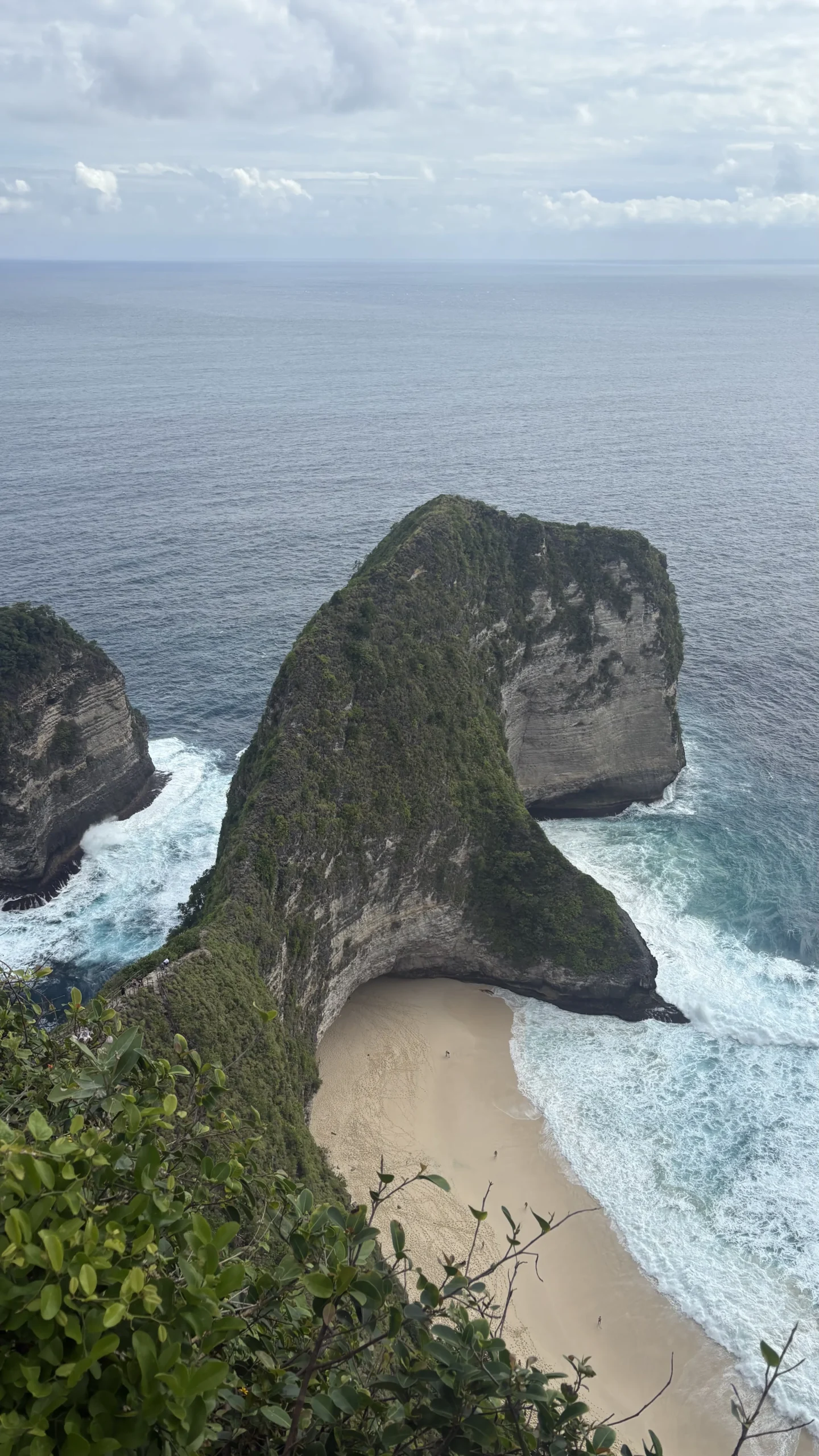
Gili Islands – Idyllic and Car‑Free
Arriving on Gili Trawangan (the largest of the three Gili Islands) was an instant relief. With no cars or motorbikes, the island’s soundtrack is the gentle chime of bicycle bells and horse-drawn carts. We got bikes for free from our hotel and leisurely cycled the island’s circumference in about an hour, stopping for fresh juice on the quieter western shore. My days were spent snorkeling right off the beach, where I swam with several sea turtles. This is also a fantastic place to get your PADI diving certification. The famous underwater statues are a short boat trip away. For its unbeatable laid-back vibe and great value, I give the Gili Islands a solid four out of five.

Lombok – Bali’s Laid‑Back Neighbour
Lombok felt like stepping back in time to a quieter version of Bali. I spent three nights in Kuta (Lombok), a sleepy surf town that shouldn’t be confused with its chaotic namesake in Bali. The best part was renting a scooter and exploring the southern coastline. I found myself on completely empty, pristine white-sand beaches like Tanjung Aan, where the sand is like peppercorns. While I didn’t attempt it, Lombok is home to the epic Mount Rinjani volcano, a multi-day trek for serious adventurers. For me, it was the perfect place to unwind with a book on the beach. Earning a four-star rating, it’s the ideal stop to truly relax.
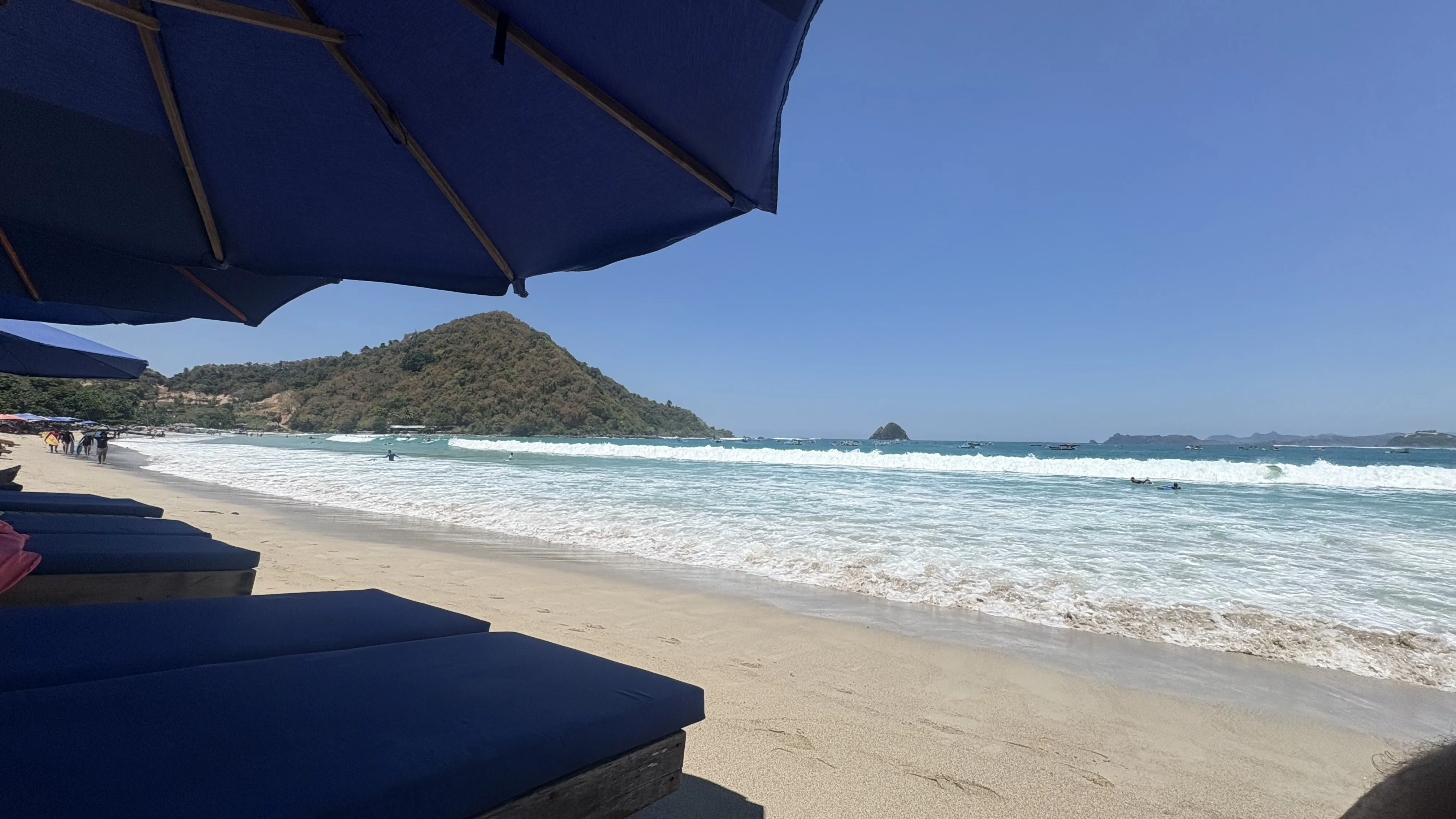
Kuta, Bali – A Logistical Stopover
My stop in Kuta, Bali was purely logistical—a one-night stay to be close to the airport for an early flight. This is the island’s original backpacker hub and is very different from the peaceful Kuta on Lombok. I turned the short stay into a mini-luxury experience by booking the Conrad Bali for 50,000 Hilton points. Thanks to my Gold status, which I get from my credit card, I received an upgrade to a room with direct access to a private lagoon pool from my terrace. Floating in the quiet pool was a fantastic way to use hotel points for maximum comfort. To understand if using points vs. cash is the right move, see our in-depth guide on hotel points vs. cash decisions. While I wouldn’t recommend the area for a long vacation, the resort itself was a 5/5 oasis for a stopover.
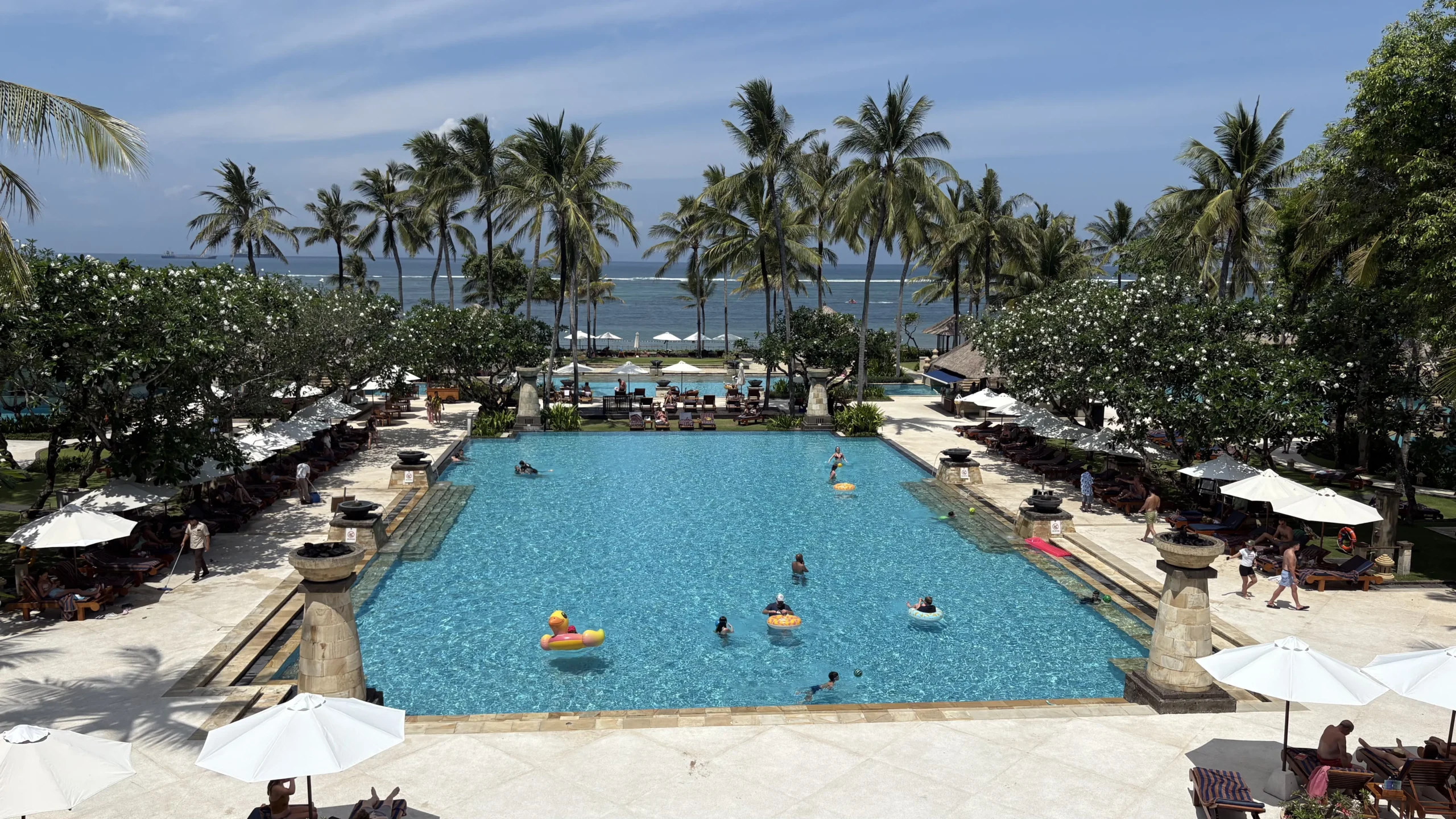
Singapore – Futuristic Luxury
Singapore was a dazzling, albeit expensive, contrast to the rustic islands. The highlight was my splurge at Marina Bay Sands, where I swam in the iconic rooftop infinity pool, overlooking the entire city—a true bucket-list moment. I balanced the cost by eating at the incredible hawker centers; a plate of Michelin-starred Hainanese Chicken Rice at Maxwell Food Centre cost only a few dollars. I also spent an evening mesmerized by the Supertree Grove light show at Gardens by the Bay. For a unique experience, a walk through the lush Cloud Forest dome is highly recommended. For its cleanliness, safety, and mind-blowing architecture, Singapore earns a full five stars while I would only recommend a day or two as it is also very expensive.
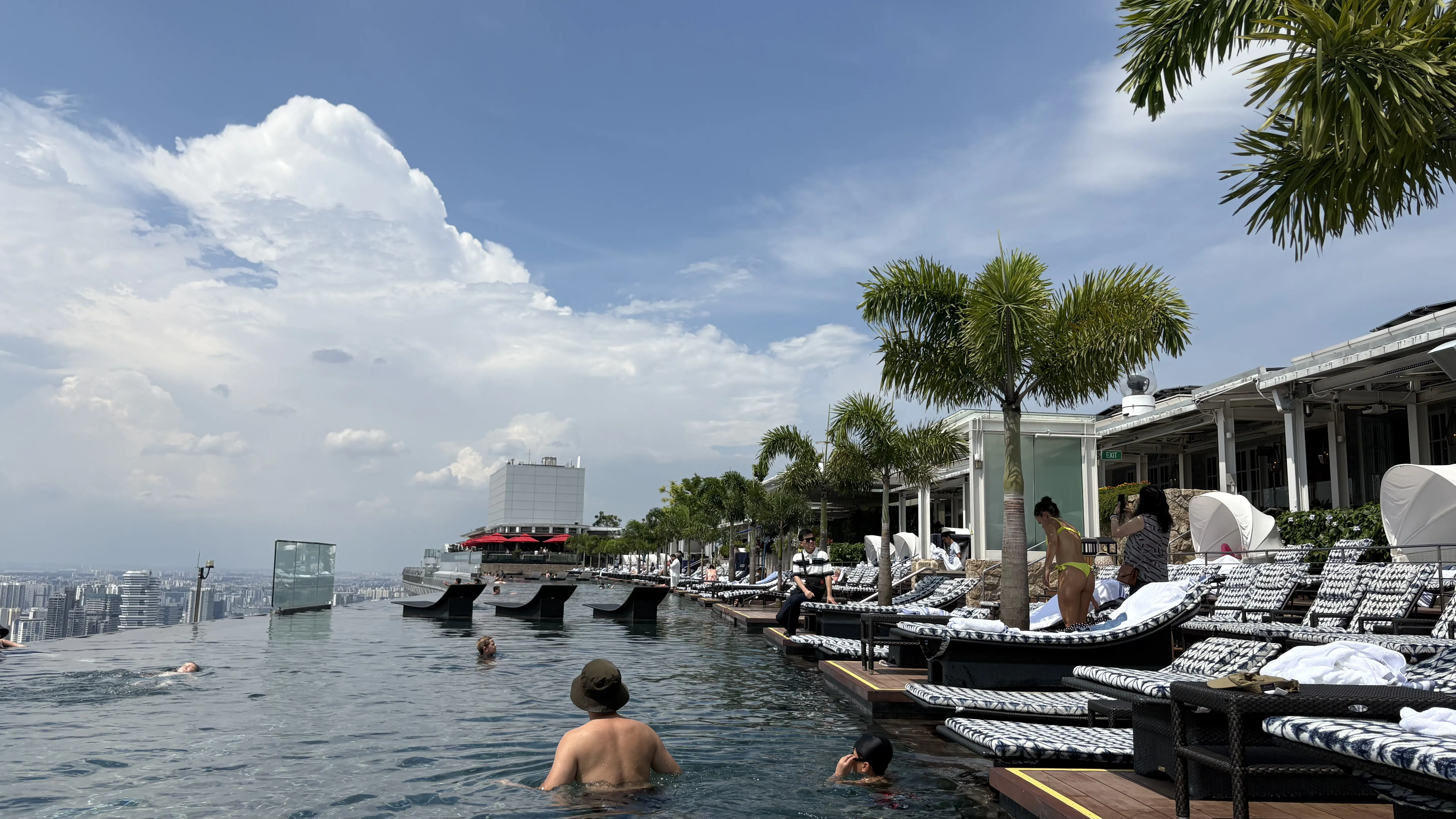
Bangkok – Luxury Finale
Bangkok was the perfect, high-energy end to my trip. Using my American Express benefits, I booked the Waldorf Astoria that included a $100 property credit, which I promptly used on rooftop cocktails with a stunning view of the city skyline. While there, you can also explore the vibrant night markets like Jodd Fairs or take a boat trip along the Chao Phraya River. Bangkok is chaotic but thrilling, earning a 4.5/5 rating.

My Business Class Flights on Points
Traveling comfortably between continents was a key part of this trip, and I managed to do it almost entirely on points. Here’s the breakdown of my flight bookings:
Outbound: Munich (MUC) to Denpasar (DPS)
I booked my flight from Munich to Bali for 67,462 Miles & More miles. The itinerary was a combination of Lufthansa Business Class from MUC to Singapore (SIN), followed by Singapore Airlines Business Class from SIN to DPS. A key takeaway here is that I had to book this specific routing over the phone, as the Miles & More website didn’t show it as an available option when combining Lufthansa and Singapore Airlines. The experience was a tale of two products: the Lufthansa Business Class felt outdated and was nothing special but food and service were good, whereas the Singapore Airlines leg was a significant upgrade, offering much more privacy and a superior seat.

Intra-Asia: Denpasar (DPS) to Singapore (SIN) to Bangkok (BKK)
For my travel between Bali and Bangkok I used a key travel hacking strategy. I booked my flight from Denpasar to Bangkok with a long layover in Singapore, all on Singapore Airlines. This had to be booked over the phone as well, as I specifically requested a connection of just under 24 hours—mine was about 23 hours. Here’s the valuable tip: many airlines price a connection under 24 hours as a simple layover, not a stopover. If my time in Singapore had exceeded 24 hours, it would have been priced as two separate awards, effectively doubling the mileage cost. This allowed me to explore Singapore for a full day while only paying for one flight. The total for this two-city journey came to just 24,000 KrisFlyer miles, which I transferred from my American Express Membership Rewards account. You can learn more about these powerful points in our complete guide to Amex Membership Rewards.
Return: Bangkok (BKK) to Munich (MUC)
My journey home was booked with 71,000 Miles & More miles, flying with Swiss Business Class from Bangkok through Zurich (ZRH) to Munich (MUC). In my opinion, the Swiss product was a noticeable step up from the old Lufthansa Business Class I had on the way out. Depending on the seat you get, there can be more space and privacy (especially the “throne” seats). The food and service also felt slightly more refined, making for a more pleasant end to the trip.
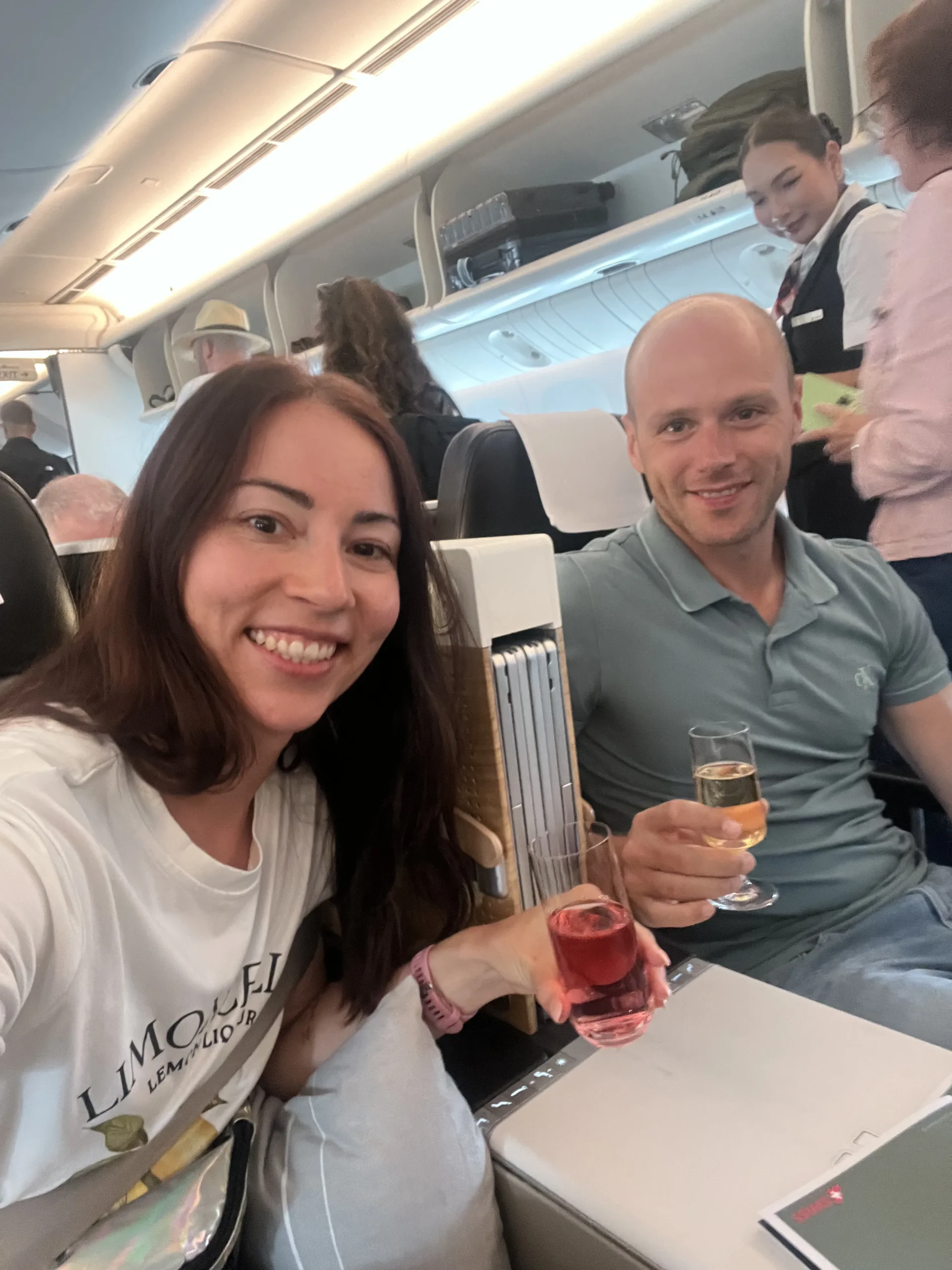
Full Comparison
| Destination | Country | Rating (5=max) | Highlights | Challenges |
|---|---|---|---|---|
| Canggu | Indonesia | 2 | Beach club nightlife, surfing scene | Heavy traffic, noise and pollution |
| Ubud | Indonesia | 2 | Rice terraces, art markets | Severe congestion, tourist crowds |
| Nusa Penida | Indonesia | 3 | Stunning cliffs, snorkeling | Increasing visitor numbers |
| Gili Islands | Indonesia | 4 | Car‑free tranquility, snorkeling | Basic amenities, limited nightlife |
| Lombok | Indonesia | 4 | Quiet beaches, authentic vibe | Limited attractions, patchy infrastructure |
| Kuta (Bali) | Indonesia | 5 | Resort comforts, Hilton upgrade | Commercialized area, heavy traffic |
| Singapore | Singapore | 5 | Iconic skyline | High cost of living |
| Bangkok | Thailand | 4.5 | Street food, temples, vibrant markets | Scams, chaotic traffic |
Category Winners
Based on my experiences and ratings across the Asia travel itinerary, certain destinations stood out in specific categories:
- Best food: Bangkok, we had the most amazing breakfast in the Waldorf Astoria and it is for free for Hilton Gold members.
- Best scenery: Nusa Penida for its dramatic cliffs and turquoise waters.
- Best nightlife: Canggu, despite its drawbacks, offered lively beach clubs and bars.
- Most cultural value: Ubud, although overcrowded, its temples and traditional performances still provide a glimpse into Balinese culture when explored off peak hours.
Gotchas You Shouldn’t Ignore
Travel isn’t just about the good parts; recognizing potential pitfalls is vital for a successful Asia travel itinerary. I encountered or learned about several “gotchas” during this trip:
- Overcrowded roads: Both Canggu and Ubud suffer from severe traffic. Plan extra time for transfers and avoid peak hours.
- Safety on boats: Several boat accidents occurred around Nusa Penida. Always choose reputable ferry companies, check for lifejackets and avoid traveling in rough conditions.
- Personal safety: Bali, Lombok and the Gilis have reported incidents of sexual assault, drink spiking, bag snatching and methanol poisoning from counterfeit spirits. Stick to licensed bars and taxis, watch your drink, and use reputable money changers.
- Bangkok scams: Tuk‑tuk drivers may claim attractions are closed and steer you toward their friends’ shops. Another common ruse involves a friendly local who offers help but leads you to overpriced services. Politely decline offers and use official apps such as Grab for transport.
Being aware of these risks doesn’t mean avoiding the destinations altogether. It just means traveling smartly so you can enjoy your Asia travel itinerary with peace of mind.
How We Picked
The ratings used in this Asia trip review are subjective but based on clear criteria from my personal journey. Each destination was evaluated across four categories:
- Cost: How expensive was lodging, food and transport relative to value?
- Culture: Did the destination offer unique traditions, art or history?
- Fun: Were there engaging activities, nightlife or natural attractions?
- Comfort: How easy and pleasant was it to navigate (cleanliness, safety, crowd levels)?
I used a simple five‑point scale, with 1 being poor and 5 being exceptional. To ensure the Asia travel itinerary remained balanced, I weighed these categories equally. For instance, Singapore scored high across all four categories despite its cost because the cultural richness, safety and comfort justified the price. Canggu, in contrast, lost points for comfort and culture due to pollution and over‑tourism.
FAQ
What’s the best city for first‑time travelers on an Asia travel itinerary?
For a gentle introduction to Southeast Asia, Singapore is ideal. It’s safe, clean and English is widely spoken. While it’s pricier than other stops, it offers a soft landing before venturing into more chaotic cities like Bangkok. If you’re on a tight budget, the Gili Islands provide a relaxing start.
How much money do I need per week for an Asia trip?
Budget travelers can comfortably manage on $40–$60 per day in places like the Gili Islands or Lombok. Mid‑range travelers should budget around $85–$105 per day for Bali and Bangkok. In Singapore, expect to spend at least $180 per day.
Is it safe to travel alone as a woman on this itinerary?
Yes, with precautions. Singapore and the Gili Islands are very safe for solo female travelers. In Bali and Lombok, stay in reputable accommodations, avoid walking alone at night and beware of drink spiking. In Bangkok, use official taxis or rideshare apps to minimize exposure to scams.
Do I need to book ferries and accommodations in advance?
During peak season (June–August and December), book ferries to Nusa Penida, the Gili Islands and Lombok in advance to avoid sold‑out boats. Choose larger ferries with good safety records. Accommodation can usually be booked a few days ahead unless you’re seeking high‑end resorts.
What’s the biggest lesson from this Asia trip review?
The biggest lesson is that careful research and flexibility are key. Over‑hyped destinations may disappoint while off‑the‑beaten‑path spots can surprise you. Use this Asia travel itinerary as a guide, but don’t be afraid to tailor it based on your interests and tolerance for crowds. Build in downtime to avoid burnout, watch for safety warnings, and embrace both the highs and lows.


